Note: Scott and Eszter are thru-riding the Continental Divide Trail this summer, currently waiting for snow to melt in Durango, CO, having completed New Mexico. They think riding bikes on the CDT is awesome. They also think hiking the CDT is awesome, and are continually in awe at the thru-hikers they meet. This list is just for fun and not intended to say one method is better than another, just that riding bikes on the CDT is an amazing way to see the trail and the country.
Also, please don’t confuse the CDT with the Great Divide Mountain Bike Route (aka Ride the Divide, aka Tour Divide, aka the Divide). Of course bikes are awesome on the Great Divide Route — it was designed for bikes!
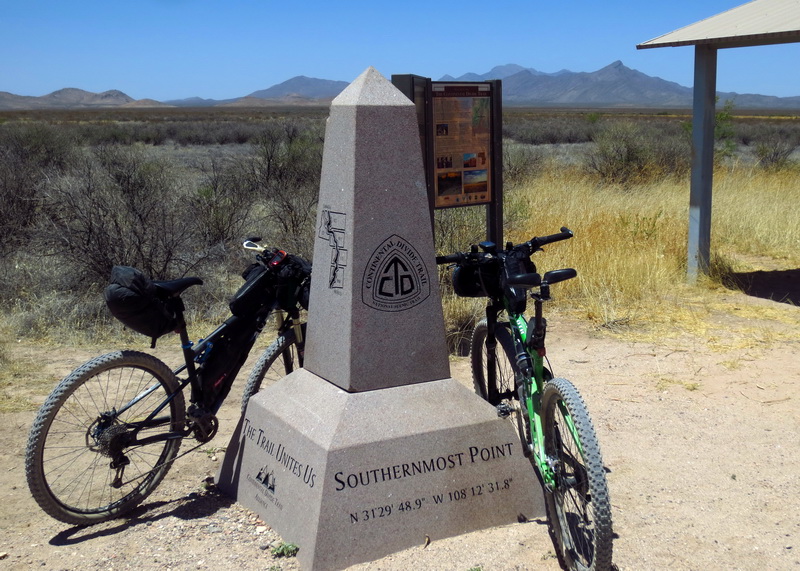
1 – Riding bikes is fun.
As John F. Kennedy said, “nothing compares to the simple pleasure of a bike ride.” Even better when you’re on a remote trail, with beautiful scenery and technical challenges.
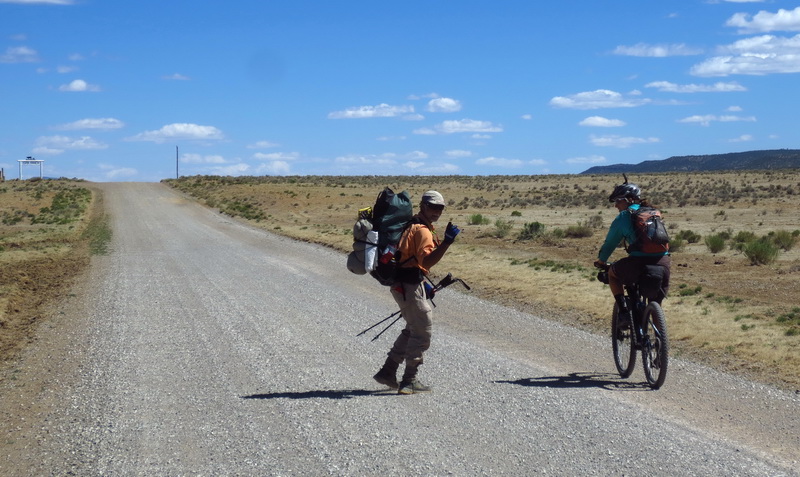
2 – The roadwalks.
The CDT isn’t finished, so there are still long stretches of roads, both dirt and paved. Most hikers seem to loathe them, and you can’t blame them. While cyclists aren’t big fans of busy roads, dirt roads can be pleasant pedals, and sure go by quickly.
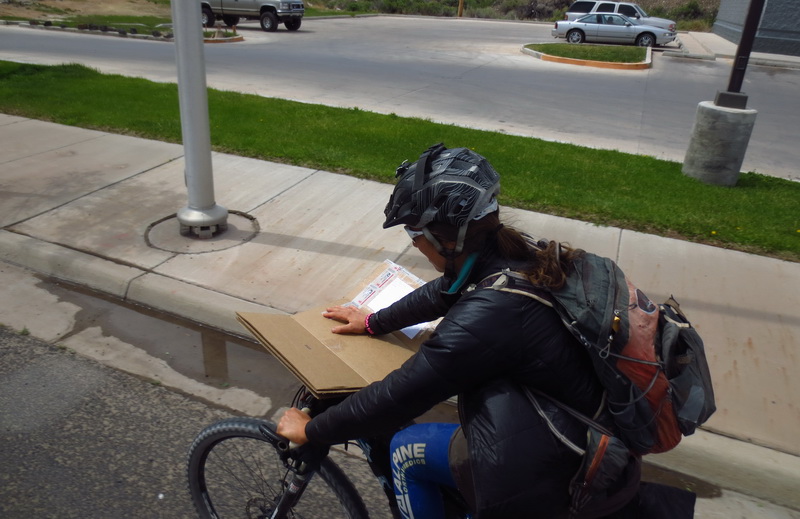
running errands and hitting the Post Office in Grants
3 – Less hitch-hiking.
When you get to Cumbres Pass, you can turn left and coast into Chama, instead of stressing over finding and inconveniencing someone for a ride into town. Well, you don’t coast down if the wind is blowing in your face, like it was for us, then you have to pedal downhill! With a bike it’s also easier to run errands in towns, many of which are pretty spread out.
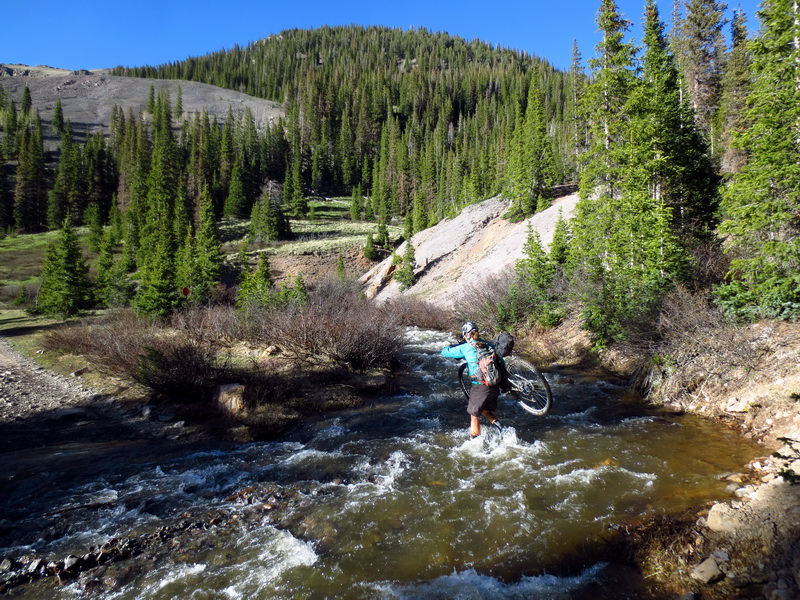
4 – You can become a hiker.
Hop off your bike, as we often do, and you are suddenly a hiker. We do lots of hike-a-bike (and we love it!). You can cross piles of deadfall, fences with no gates, piles of boulders, or even go XC to avoid flooding rivers. A lightly loaded bike is only a minor encumbrance and perhaps the most versatile way to travel in the backcountry.
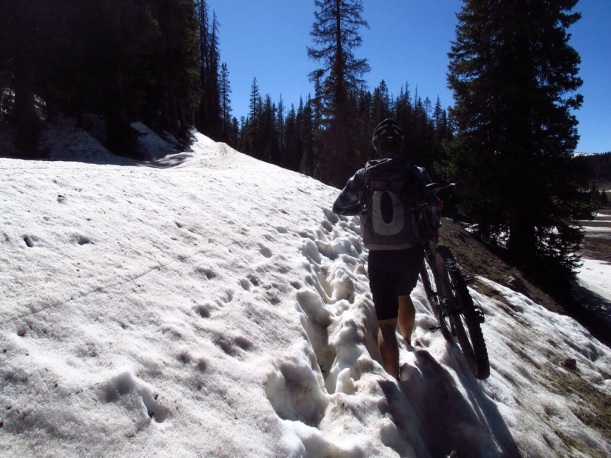
5 – Easier time window.
It can be tough to squeeze a CDT thru-hike in between spring and fall. Hikers we met were stressing about hitting a daily mileage, worrying that if they don’t keep moving winter will hit before they are done. The CDT is the longest of the three big long distance trails, and the hardest. On a bike you can average more miles per day (thanks largely to road sections and Wilderness detours), so it’s easier to complete the trail in a season.
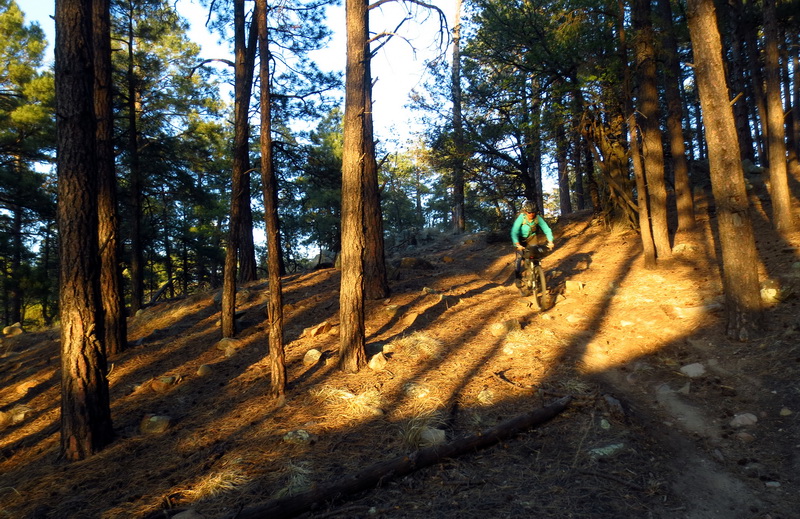
6 – Coasting.
Downhill. It feels like flying. Silently, smoothly. Enough said.

7 – Resupply is easier.
With shorter times between towns, it is easier to resupply solely from stores, instead of pre-planning supply drops and having someone at home ship them out periodically to you. Also finding water is much less of an issue since you can cover more distance in less time, especially in the deserts.
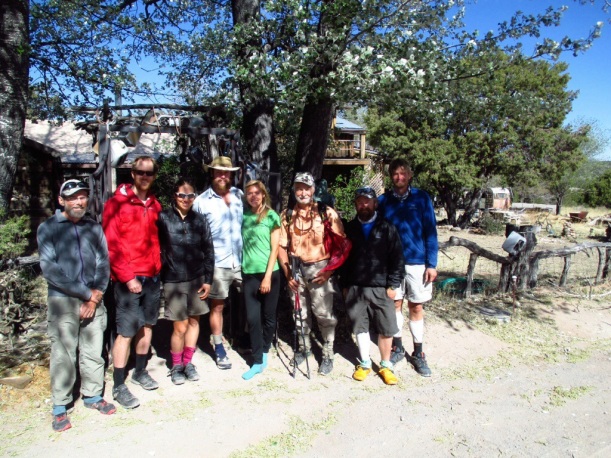
8 – It makes you different than everyone else.
There are 200 or so thru-hikers on the trail and 2 thru-riders. It’s fun to field all the questions from hikers, some of them really curious about bikepacking, and interested in trying it for themselves. Overwhelmingly the response from thru-hikers we have met has been positive.

first thru-hiker we met asked if he could have a safety pin so he could pop his blisters
9 – It’s easy on the feet.
No blisters (at least not yet!).
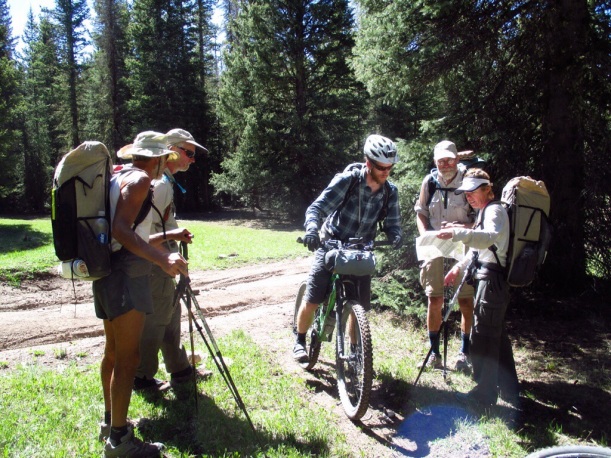
10 – Reading a GPS is easier.
We seem to be having an easier time navigating the trail, and I think one of the big reasons is that with a GPS on the handlebars you can watch your progress and really understand the landscape and trails. That makes tricky turns and XC sections easier, in my estimation. Quite a few hikers told us they knew to follow our tire tracks because they could tell we knew where we were going!
Of course, there are some reasons bikes are not-so-awesome:

1 – Wind.
Roadwalks may be faster, but you’re more exposed to the wind. Tailwinds mean big smiles and even bigger miles. Headwinds near O-bar-O mountain can lead to grumpiness and mental fatigue. When you hike, wind direction and speed almost doesn’t matter. On a bike, on singletrack, it also doesn’t really matter, but on roads it’s another story.
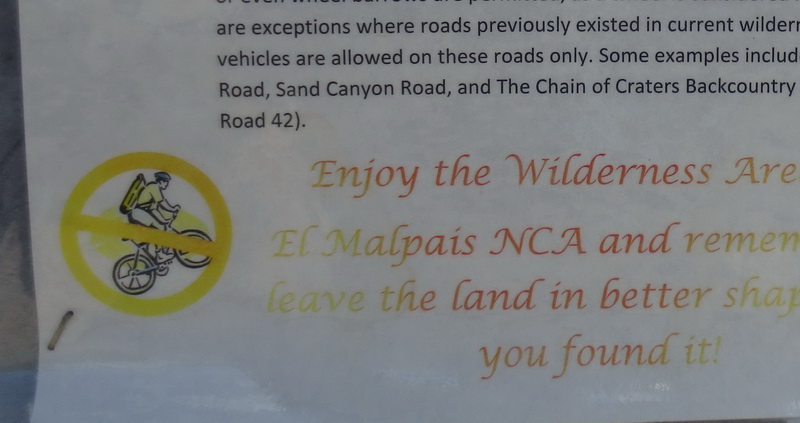
2 – Wilderness.
Bikes are allowed on most of the official CDT, but not in Wilderness areas (and a few other places). This often means detouring on more roads, sometimes of remote and primitive quality (the type a bikepacker or backpacker seeks) but other times, like coming into Cuba, it’s on high speed highways. Highways are dangerous and loud. I really hope trail planners and land managers will start to consider primitive bike thru-routes when designating future Wilderness areas.
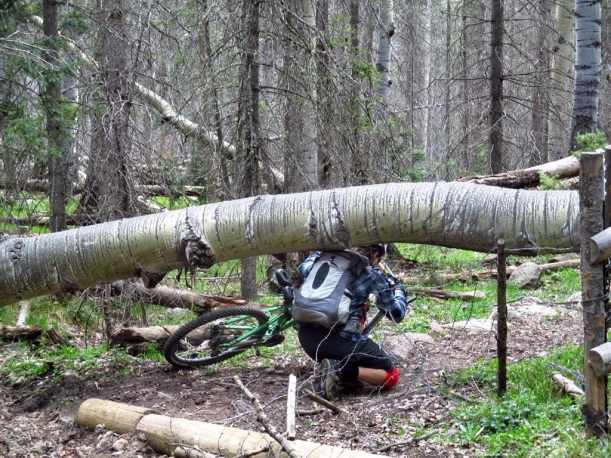
3 – Trees.
You can get over just about any jungle gym pile-o-trees, but it sure can be difficult with a bike. Hoist bike into tree, climb around it, then hoist bike up and over. Repeat.
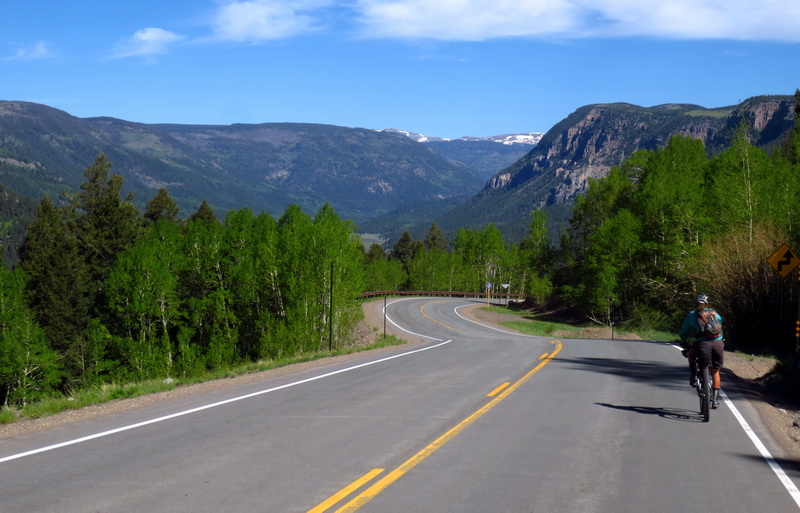
4 – Saddle sores.
Riding may be easier on the feet, but there are other points of contact it is not so friendly to. Ouchie.

5 – Mechanicals.
There isn’t much that go wrong with a pair of shoes and a pack. Nothing too show stopping, anyway. A bike has many points of catastrophic failure, not the least of which is inflation of tires. So far we have had very good luck in this department.
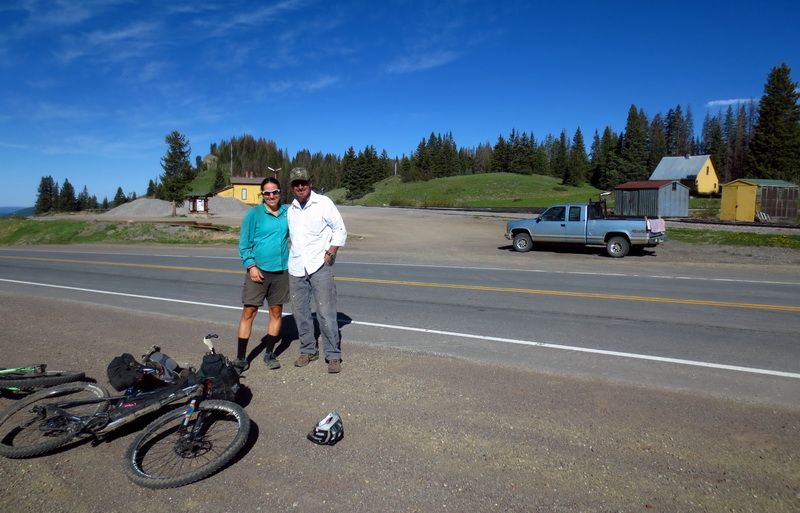
6 – Less hitch-hiking.
While being on a bike allows you to rely less on others, and there is a deeply rooted self-support ideal in the sport, it can be a disadvantage in the overall experience of a thru-ride. Hikers remark they meet some of the most interesting people when hitch-hiking or otherwise asking for help. Being self-reliant is a high ideal, but not always the most social way to go through life.
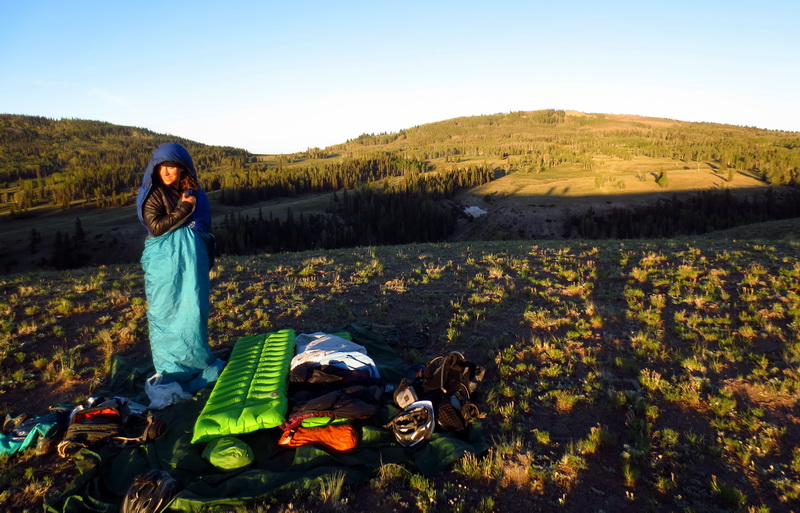
no tent – cowboy campin’
7 – Less gear.
You pretty much have to run an ultralight kit. Few luxuries, minimal layers. If you carry too much, mountain biking quickly becomes sub-fun and you are walking more than you are riding.
Conclusion:
We love bikes! We love the CDT! Together, it’s magic. More people should ride the CDT.
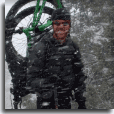


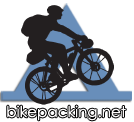
Love your two’s attitude. Wonderful that you are so positive out there.
you two are awesome! life adventure that cannot be beat…
This is the only sporting event I have been following lately!
Cheers to your continued success. T